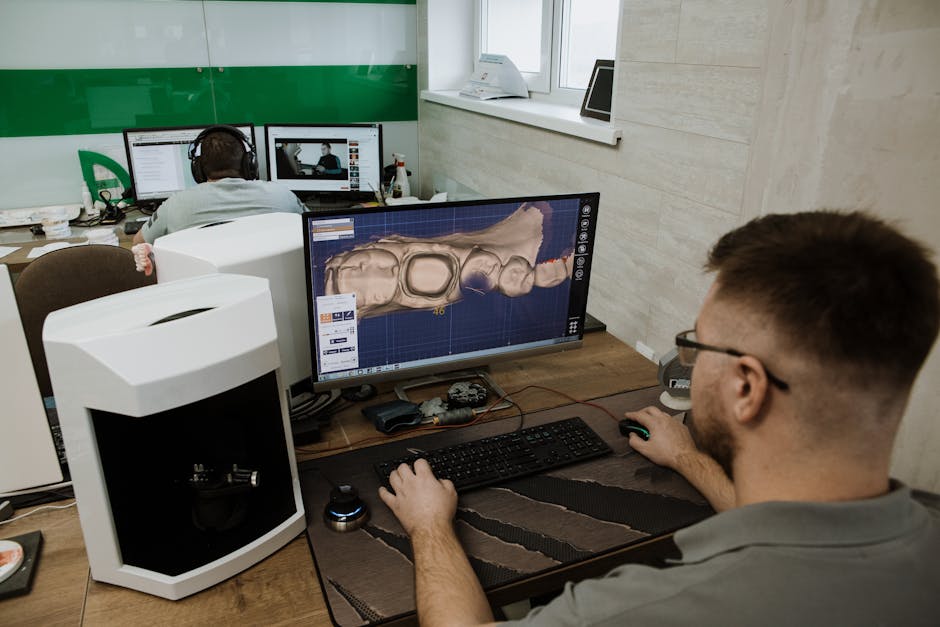The Role of AI in Digital Transformation
You’re already tapping into the transformative power of AI, and that’s just the tip of the iceberg. With AI, you can turbocharge operational efficiency, automate mundane tasks, and create personalised customer experiences that make people feel seen and heard. But that’s not all – AI-driven predictive analytics can uncover hidden patterns, and AI-powered product innovation can create products that are in tune with customer needs. And let’s not forget AI-driven business model innovation, which can disrupt traditional industries and create new revenue streams. Buckle up, because the role of AI in digital transformation is about to take your business to the next level – and it’s only getting started.
Key Takeaways
• AI drives operational efficiency by analysing data, predicting bottlenecks, and optimising resource allocation to maximise ROI.• AI-powered customer experiences personalise interactions, detect emotional cues, and respond empathetically to build brand loyalty.• Predictive analytics uncovers customer needs, identifies trends, and enables retailers to anticipate product demand and optimise stock levels.• AI-driven innovation generates product concepts, tests prototypes, and gathers feedback to create products that meet customer needs and expectations.• AI transforms business models by adjusting pricing, creating new revenue streams, and disrupting traditional industries to stay competitive.
AI-Driven Operational Efficiency

As you navigate the complex landscape of digital transformation, you’ll quickly realise that AI-driven operational efficiency is the secret sauce that separates the innovators from the also-rans.
It’s not just about automating tedious tasks or slashing costs; it’s about harnessing the power of artificial intelligence to streamline your operations, optimise resource allocation, and supercharge your supply chain.
Think of AI as your personal operations ninja, slicing through inefficiencies and pinpointing areas ripe for improvement.
By analysing mountains of data, AI can identify patterns, predict bottlenecks, and recommend tweaks to your supply chain that’ll make your competitors green with envy.
And let’s not forget about resource allocation – AI can help you allocate resources with surgical precision, ensuring that every dollar, every hour, and every ounce of effort is optimised for maximum ROI.
The result? A lean, mean, operational machine that’s agile, adaptable, and ready to take on the competition.
And the best part? You’ll be able to redirect those freed-up resources towards innovation, customer experience, and growth – the things that truly matter in today’s fast-paced digital landscape.
Enhanced Customer Experience Through AI

Now that you’ve streamlined your operations with AI, it’s time to focus on the real prise: making your customers luv you, and AI is the perfect wingman to help you do just that.
Customers don’t just want to be satisfied; they want to be wowed. And AI is the key to creating those wow moments that turn customers into loyal fans.
With AI, you can create Personalised interactions that make your customers feel seen and heard. No more generic ‘Dear customer’ emails or bland product recommendations. AI helps you tailor your messages and offers to each individual’s preferences, making them feel like they’re the only one who matters.
Emotional intelligence: AI-powered chatbots can detect emotional cues and respond empathetically, diffusing tense situations and turning frustrated customers into happy ones.
AI-driven sentiment analysis helps you identify areas for improvement, so you can fix problems before they escalate.
AI-powered recommendation engines suggest products or services that customers are likely to luv, increasing the chances of a sale and building brand loyalty.
Predictive Analytics and Insights

You’re about to uncover the secret to anticipating your customers’ needs before they even know what they want themselves, thanks to predictive analytics and insights that can decode their behaviour and preferences.
It’s like having a crystal ball that shows you exactly what they’ll want next, and when. But, unlike a crystal ball, predictive analytics is rooted in cold, hard data.
Using data mining techniques, you can dig deep into customer interactions, transactions, and online behaviours to uncover patterns and trends.
It’s like finding a needle in a haystack, but instead of a needle, it’s a golden nugget of insight that tells you exactly what your customers crave.
Pattern recognition algorithms can then help you identify the relationships between these patterns, giving you a roadmap to customer satisfaction.
Imagine being able to predict which customers are at risk of churning, and proactively offering them personalised promotions to keep them hooked.
Or, envision this: you’re a retailer who can anticipate which products will fly off the shelves, and stock up accordingly.
It’s not magic; it’s predictive analytics.
By leveraging these insights, you can create experiences that are tailored to your customers’ needs, making them feel seen, heard, and understood.
The result? Loyalty, retention, and a serious competitive edge.
AI-Powered Product Innovation

By harnessing the power of predictive analytics, you’ve already got a crystal ball that reveals your customers’ deepest desires; now it’s time to take that insight and turn it into tangible products that’ll make their hearts skip a beat.
In the world of AI-powered product innovation, the goal is to create products that are so in tune with customer needs that they seem almost…magical. And the secret to achieving this magic lies in marrying predictive analytics with design thinking. By understanding your customers’ pain points and desires, you can craft a value proposition that speaks directly to their hearts (and wallets).
AI-driven concept generation: Let AI algorithms generate a plethora of product concepts based on customer insights, and then use human intuition to refine and iterate on the most promising ideas.
Virtual product testing: Use AI-powered simulations to test product prototypes, gather feedback, and iterate on the design – all without breaking the bank (or your customers’ patience).
Continuous feedback loops: Implement AI-driven feedback mechanisms that allow customers to provide real-time input on your products, enabling you to refine and improve them on the fly.
Intelligent Automation and RPA

As you’re transforming your business with AI, you’re probably wondering how to make the most of it.
That’s where intelligent automation and RPA come in – think of them as the ultimate productivity hack.
Process Optimisation Strategies
To catapult your organisation into the future, you’ll need to ditch outdated workflows and implement intelligent automation and robotic process automation (RPA) to turbocharge your operational efficiency.
It’s time to stop putting Band-Aids on broken processes and instead, get to the root cause of the problem.
By automating repetitive tasks, you’ll free up resources to tackle the complex issues plaguing your supply chain.
Identify and eliminate unnecessary steps in your workflow, making way for a more streamlined process.
Implement RPA to handle tasks like data entry, freeing up your team to focus on high-value tasks.
Use intelligent automation to analyse and optimise your supply chain, pinpointing areas where you can cut costs and boost efficiency.
Automation Tool Integration
With your processes optimised, it’s time to bring in the heavy artillery: integrating automation tools that can take your operations to the next level.
You’ve got the foundation laid, now it’s time to supercharge your workflow with intelligent automation and robotic process automation (RPA). Think of it as upgrading from a manual transmission to autopilot mode.
By integrating automation tools, you can streamline tasks, reduce manual labour, and free up your team to focus on higher-value tasks.
API management plays a vital role in this integration, allowing different tools to seamlessly communicate with each other.
It’s like conducting an orchestra – each tool is a separate instrument, and API management facilitates they’re all playing in harmony.
Workflow orchestration takes this a step further, enabling you to design and automate complex business processes with ease.
It’s like having a personal assistant that takes care of the logistics, so you can focus on the big picture.
By integrating automation tools, you’ll be able to scale your operations, reduce errors, and boost productivity.
The result? A lean, mean, digital machine that’s ready to take on the competition.
AI-Driven Business Model Innovation

You’re likely no stranger to the fact that AI is rewriting the playbook on business model innovation, and companies that fail to adapt risk becoming the next Blockbuster or Kodak.
The truth is, AI-driven business model innovation isn’t just about tweaking your existing strategy; it’s about creating new revenue streams, disrupting entire industries, and building ecosystems that adapt to changing market conditions.
Dynamic Pricing: AI-powered pricing models can adjust in real-time, maximising revenue and profitability. No more static pricing tables or manual interventions required!
Platform-Based Business Models: AI enables the creation of platform-based business models, where companies connect buyers and sellers, and monetise the transactions. Think Airbnb, Uber, or Amazon Marketplace.
Data-Driven Business Models: AI can help companies create new revenue streams by monetising their data, either by selling anonymised data to third parties or by creating data-driven services.
In today’s digital landscape, companies need to rethink their business models to stay competitive. AI-driven business model innovation offers a powerful way to create new revenue streams, disrupt traditional industries, and build resilient business ecosystems.
The Future of Work With AI

As you step into the future of work with AI, you’ll soon realise that your job description just got a whole lot more interesting – and complex.
With AI taking over the mundane tasks, you’ll be freed up to focus on the creative, high-value stuff (read: the fun stuff).
But you’ll need to upgrade your skills to work in tandem with AI, or risk being left in the dust.
Augmented Job Roles
Riding the AI wave, you’ll soon find that your job description has transformed into a hybrid role that’s part human, part machine, and totally unstoppable. Welcome to the world of augmented job roles, where Work Reinvention is the new normal. As AI takes over the mundane tasks, you’ll have more time to focus on the creative, high-value tasks that make you, well, human.
Your skills will need to evolve to work in tandem with AI. Think of it as a continuous learning journey where you’ll need to upskill and reskill to stay relevant. This is Skill Evolution.
AI will take over tasks that are repetitive, freeing you up to focus on strategy, innovation, and decision-making. This is Task Redefinition.
New job categories will emerge that we can’t even imagine yet. Think AI ethicist, AI trainer, or AI strategist – the possibilities are endless! This is New Job Categories.
The future of work is all about collaboration between humans and machines. Embrace the change, and you’ll find that your job has transformed into something more exciting, challenging, and rewarding.
AI-Driven Skill Shift
Your career roadmap just got a major reboot, and it’s time to swap outdated skills for futuristic ones, lest you get left in the dust of the AI revolution.
As AI takes over routine tasks, you’ll need to upgrade your skills to stay relevant. It’s not about competing with AI, but complementing it.
The good news is that AI can also be your career coach. Virtual Mentorship platforms, powered by AI, can provide personalised guidance, helping you identify skill gaps and suggesting tailored learning paths.
Adaptive Learning systems, another AI-driven innovation, will help you acquire new skills at an unprecedented pace. With AI, you’ll learn faster, smarter, and more efficiently.
The future of work is all about humans and AI collaborating to achieve the impossible. So, buckle up, and get ready to reskill, upskill, and thrive in the AI-driven economy.
The AI revolution is here, and it’s time to level up your career game!
Conclusion
As you stand at the threshold of this AI-driven revolution, remember the words of the Oracle of Delphi: ‘Know thyself.‘
For in the sphere of digital transformation, self-awareness is key.
Don’t be like Narcissus, infatuated with your own reflection, oblivious to the AI-powered tidal wave crashing around you.
Instead, harness the power of AI to reshape your business, and emerge victorious, like the phoenix from the ashes.
The future belongs to those who adapt, and the clock is ticking.
Contact us to discuss our services now!
